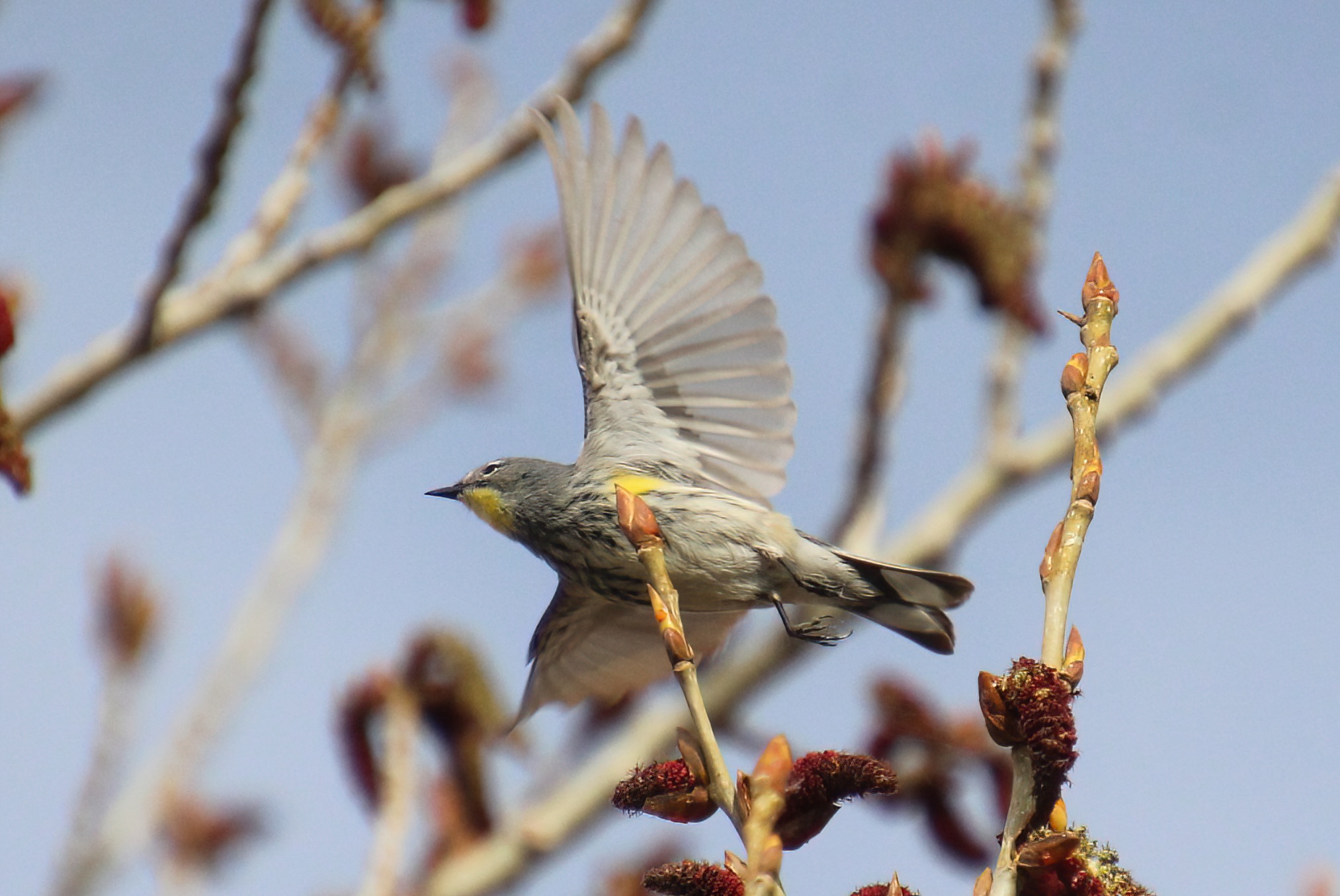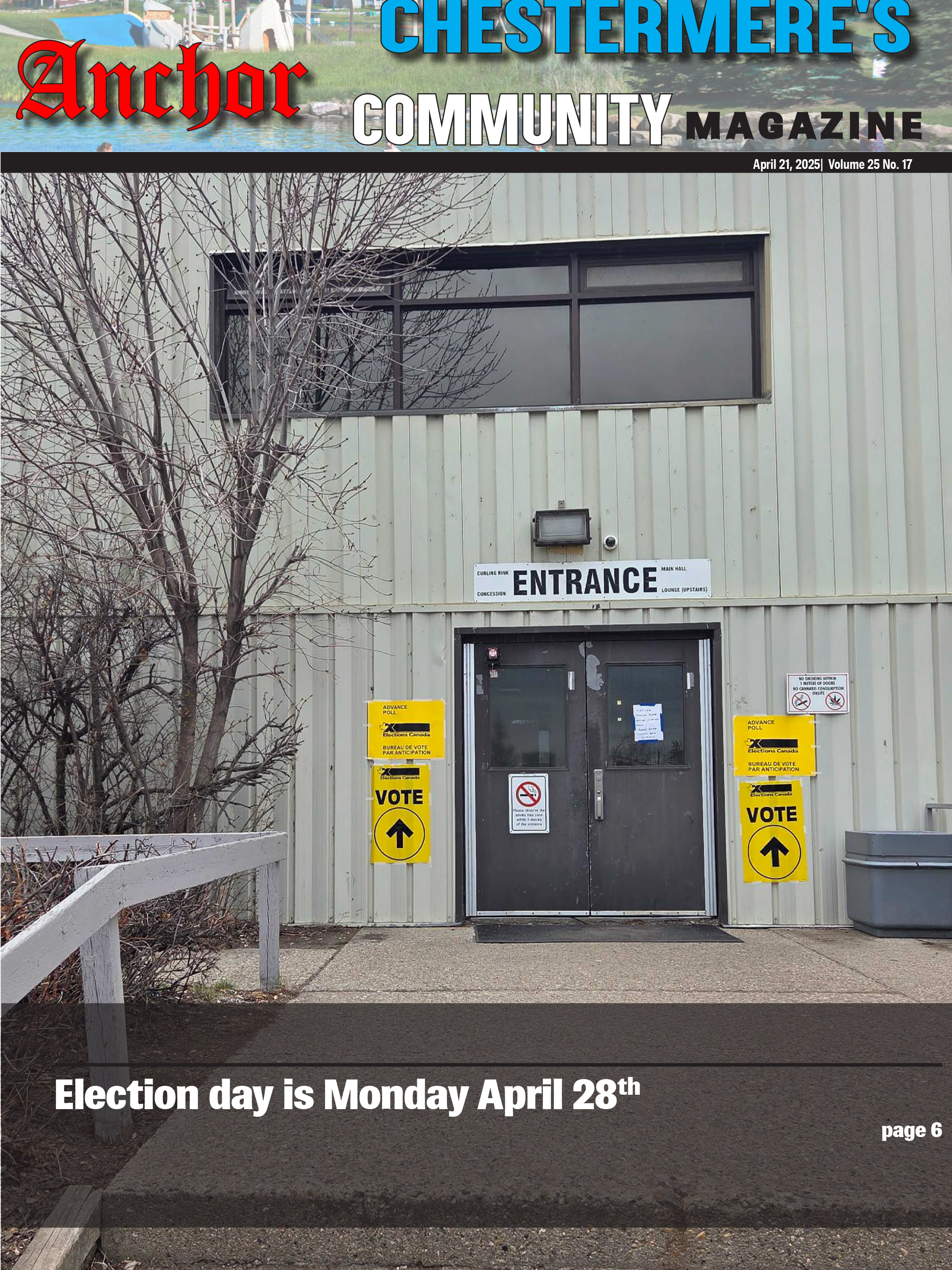The month of May not only brings NHL playoffs, but also inspires many a birder, upon hearing the single word – “warbler”. These brilliantly colored songbirds, all twenty-two recorded species in Alberta, motivate the avid birder to take a planned trip in mid May to the northern reaches of the province. Cold Lake Provincial Park beckons passionate warbler wanderers from the south to enjoy a week or more of birding, exploring the shrubs along Hall’s Lagoon, and the aspen stands within the park.
A truly early arrival of the warbler clan is the most commonly seen, yellow-rumped warbler. At first glance you may think this warbler has four rumps. Upon close examination, a single yellow rump is sufficient, but is enhanced with yellow side patches and on the crest of the head. If you find that your warbler has a yellow throat in addition to the above markings, you have the Audubon sub-species of the yellow-rumped warbler. The white-throated sub-species is known as the Myrtle warbler.
For such small birds, migratory routes are quite distant. Almost all warblers pass through most of Alberta, heading for the boreal forest regions where open stands of fir, spruce, pine and aspen are available. Many yellow-rumped warblers have flown from wintering grounds located in Mexico, Central America and parts of the Pacific coast region. Key of course to raising young warblers is the vast quantity of insects available for consumption in our boreal forests. Aside from the delectable ants, larvae, beetles, gnats, spiders and grasshoppers to enjoy, this warbler heartily consumes the spruce budworm, a significant destroyer of these very forests in which warblers thrive.
Yellow-rumped warblers arrive in Alberta around mid to late April. Elaine and I have enjoyed watching these active, colorful and expressive males flit from branch to branch, closely exploring each dried leaf for sustenance. Flying insects are in danger as well, with warblers more than capable of jumping from a branch to nab the snack. Male warblers arrive first to establish territory in the boreal forest. With more experience migrating, older warblers will arrive first, with the previous year’s young following. This phenomenon is known as differential migration. Males are also brightly colored, much like male ducks, with each male attempting to attract a mate. Musical as well, males will call out a trill-like series of four to seven syllables. At times a “chip” or “check” call is used.
Fortunately for the wandering warbler seeker, yellow-rumped warblers are quite numerous and have not suffered from the same steep population declines as experienced by the Canada Warbler, the Bay-breasted Warbler and the Black-throated Green Warbler. In each case, habitat losses play a major role in the decline of nesting areas and hence populations of Sensitive or Species of Special Concern.
If you are considering a trip to the northern parts of Alberta, be sure to consider Cold Lake Provincial Park and Lesser Slave Lake Provincial Park as potential birding adventures. Imagine seeing all twenty-two species that visit Alberta in one year. A dream indeed for the wandering warbler seeker!
Warbler Wonders

In response to Canada's Online News Act and Meta (Facebook and Instagram) removing access to Canada's local news from their platforms, Anchor Media Inc encourages you to get your news directly from your trusted source by bookmarking this site and downloading the Rogue Radio App. Send your news tips, story ideas, pictures, and videos to info@anchormedia.ca.





